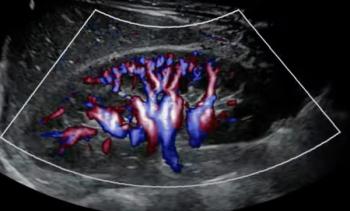
Dynamic Contrast-Enhanced, Susceptibility Contrast MR Images Help Grade Gliomas
There is high diagnostic accuracy when grading gliomas with dynamic contrast material–enhanced (DCE) and dynamic susceptibility contrast (DSC) MR imaging.
Dynamic contrast material–enhanced (DCE) and dynamic susceptibility contrast (DSC) magnetic resonance (MR) provide comparable, high diagnostic accuracy for grading gliomas, according to a study published in the journal
Researchers from Italy and the United States sought to evaluate the feasibility of a standardized protocol for acquisition and analysis of DCE and DSC-MR imaging setting and to verify its accuracy in predicting glioma grade according to the new World Health Organization 2016 classification.
A total of 100 patients with glioma were prospectively examined at 3 T in seven centers that performed the same preoperative MR imaging protocol, including DCE and DSC sequences. Two independent readers identified the perfusion hotspots on maps of volume transfer constant (Ktrans), plasma (vp) and extravascular-extracellular space (ve) volumes, initial area under the concentration curve, and relative cerebral blood volume (rCBV). Differences in parameters between grades and molecular subtypes were assessed by using Kruskal-Wallis and Mann-Whitney U tests. All patients tolerated the protocol.
The results included successfully obtained perfusion maps in 94 patients.
“An excellent interreader reproducibility of DSC- and DCE-derived measures was found,” the authors wrote. Among DCE-derived parameters, vp and ve had the highest accuracy (are under the receiver operating characteristic curve [Az] = 0.847 and 0.853) for glioma grading. DSC-derived rCBV had the highest accuracy (Az = 0.894), but the difference was not statistically significant.
Among lower-grade gliomas, a moderate increase in both vp and rCBV was evident in isocitrate dehydrogenase wild-type tumors, although this was not significant.
The researchers concluded that a standardized multicenter acquisition and analysis protocol of DCE and DSC MR imaging is feasible and highly reproducible, with both techniques showing a comparable, high diagnostic accuracy for grading gliomas.
Newsletter
Stay at the forefront of radiology with the Diagnostic Imaging newsletter, delivering the latest news, clinical insights, and imaging advancements for today’s radiologists.




























